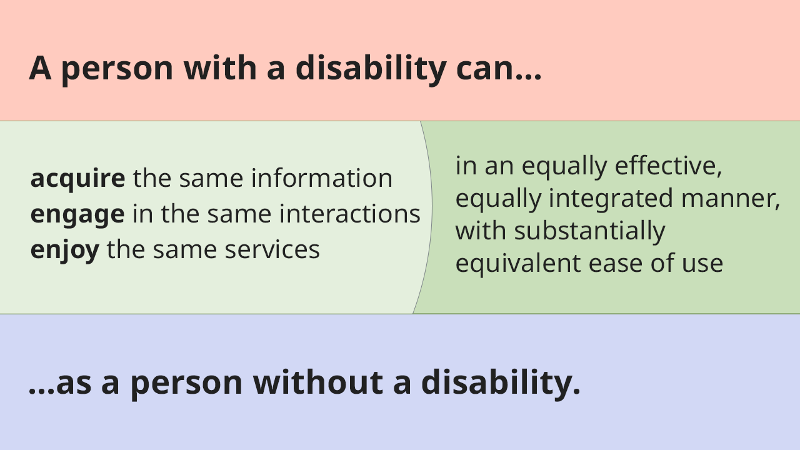Accessibility in Higher Education
What is Accessibility?

“The University of Virginia values disability within the spectrum of human diversity and is committed to a living, learning, and work environment where individuals with disabilities can be their full selves and thrive. The University recognizes that ensuring equal access to educational, employment, and all other opportunities is a shared responsibility that demands our continuous identification and removal of physical, technological, and attitudinal barriers.”
→ Before viewing the video, what are some barriers to learning in higher education that prevent students with disabilities from achieving their highest potential?
Video: Intro to Accessibility [10:37 minutes]
(National Center on Accessible Educational Materials and licensed under a Creative Commons Attribution-ShareAlike 4.0 International License)
Another understanding of accessibility comes from the IDRC (Inclusive Design Research Centre), which reframes disability within the design context. Rather than a personal characteristic or a binary state (disabled vs. non-disabled), disability is framed as: a mismatch between the needs of the individual and the design of the product, system or service. With this framing, disability can be experienced by anyone excluded by the design. For example, when listening to an audio-only lecture the student who is blind is less disabled than the student who has not read the background material, the student who is less fluent with the language, or the student who has been up all night. An audio lecture is designed for a student who has the contextual knowledge, understands the language well, and can fully attend. With this framing anyone can potentially benefit from inclusive design.
Accessibility is therefore the ability of the design or system to match the requirements of the individual. It is not possible to determine whether something is accessible unless you know the user, the context and the goal.
Text Attributions
- This chapter was adapted from What is Inclusive Design? by Inclusive Design Research Centre. Licensed under a Creative Commons Attribution 4.0 License.
Media Attributions
- “What is Accessibility” image by National Center on Accessible Educational Materials is licensed under a Creative Commons Attribution-ShareAlike 4.0 International License.
- “Intro to Accessibility” video by National Center on Accessible Educational Materials is licensed under a Creative Commons Attribution-ShareAlike 4.0 International License.

